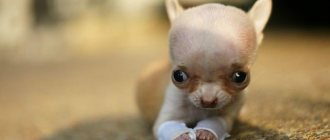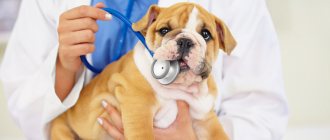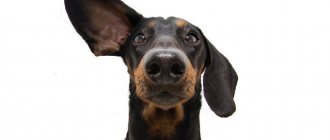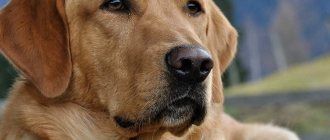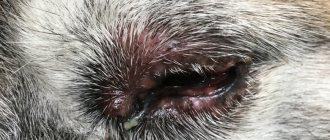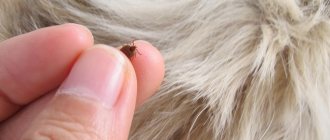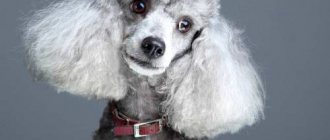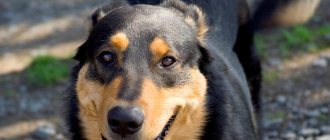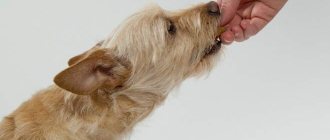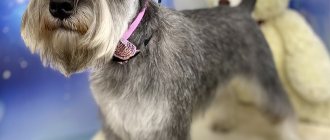- abdominal palpation and rectal examination if urethral obstruction is suspected;
- diagnostic imaging;
- ultrasonography;
- simple radiography;
- radiography with contrast (positive contrast studies, antegrade pyelography);
- computed tomography;
- cystoscopy.
- overexposure of radiographs;
- patient positioning error;
- parts of the urinary tract are closed by the pelvis;
- air in the lumen of the bladder or abdominal cavity after cystotomy or other reasons.
- clinical signs of urinary tract infection. We remember that any calculus can be its source;
- suspicion of struvite urolithiasis due to infection. Then urine culture will help dissolve this calculus, that is, remove the cause.
Diagnostic Imaging
Ultrasonography can detect small uroliths of any radiopacity. In addition, the operator and patient avoid exposure to ionizing radiation. However, compared with plain radiography, ultrasound is more time consuming and makes it difficult to detect stones in the ureter, pelvis and distal urethra. When diagnosing nephroliths and ureteroliths, ultrasound helps to identify pyeloectasia, ureterectasia and its severity, which is very important for developing a treatment plan.
Figure 3. A large calculus with uneven edges in the bladder cavity, giving a clear echoacoustic shadow. Ultrasound signs of acute cystitis
Figure 4. Appearance of the stone, which was visualized by ultrasound in Figure 3 after removal. The stone is represented according to spectrometric analysis by calcium oxalate monohydrate 60%, brushite 30% and struvite 10%
Figure 5. Ultrasonogram of two large stones with smooth edges in the bladder cavity, which give an echoacoustic shadow. The presence of suspension in the cavity of the bladder. Upon further examination, struvite-type urolithiasis was diagnosed against the background of a urinary tract infection in a female dog.
Plain radiographs should be part of the routine examination of patients with urolithiasis. When installing, it should be taken into account that the entire urinary system should be clearly visualized in the picture. Plain abdominal radiographs should include both lateral and ventrodorsal views, and sometimes oblique views when interpretation difficulties exist.
Only certain uroliths will be radiopaque (eg, struvite, calcium oxalate, calcium phosphate). Small stones, 1–3 mm in size, may be poorly visualized on a native x-ray. Positive contrast studies are important for detecting stones that are radiolucent.
Figure 6. X-ray of a male Yorkshire Terrier. Lateral projection. A radiopaque calculus with uneven edges is visualized in the projection of the bladder
The number and size of stones will be important when choosing the most appropriate method for stone extraction or removal. If you need to find out the size of the stone, then a more accurate diagnosis is an x-ray than an ultrasound.
Uroliths on radiographs may be missed for a variety of reasons, including:
Analysis of urine
All dogs with urolithiasis should undergo a clinical urine test, including urine specific gravity and pH, with sediment microscopy required. Urine pH and crystalluria may indicate the most likely mineral composition of the outer layer of urolith, but is not 100% sensitive or specific in diagnosing stone type.
Figure 7. Microscopy of urine sediment revealed large amounts of struvite
Figure 8. Microscopy of urine sediment revealed calcium oxalates in large quantities
The most accurate diagnosis for determining the type of stone is a spectrometric study. The method allows the determination of both organic and inorganic compounds, as well as different crystalline phases of the same compound.
Any stone must be examined. This will allow you to make a correct diagnosis and make it possible to prevent the occurrence of new ones in the future.
Urine culture should be performed on dogs if:
Urolithiasis in dogs and its varieties
If the specific gravity or pH of urine deviates from the norm, then over time, stones, or urinary calculi, will form in the dog's bladder. They are dense formations that prevent the free movement and exit of urine. Due to stagnation, the number and frequency of urination is reduced, and the accumulated urine poisons the body and causes inflammation. Based on the severity of symptoms, ICD is divided into 4 types.
Asymptomatic
This species is distinguished by the absence of external signs. The pet does not show concern and behaves as usual. Pathological changes can be seen during a blood test. In case of illness, the pH shifts to an acidic or alkaline environment. Specific types of stones can be detected on ultrasound and x-rays.
Lightweight
The mild form is accompanied by frequent and painful urination. The animal constantly licks itself, asks for a walk more often than usual, whines during bowel movements and spends more time on it. Droplets of blood remain on the genitals of a urinating dog.
Due to the inflammatory process, the likelihood of a secondary infection increases. It can be easily detected by a sudden rise in temperature.
Heavy
The pet becomes apathetic, refuses to eat, but drinks often. Control over urination is lost: a well-mannered dog begins to leave small puddles or droplets of urine throughout the house. At the moment of defecation, he stops raising his paw and takes a pose characteristic of bitches. Splashes of blood are clearly visible. In the absence of medication, there is a rise in temperature, repeated vomiting and convulsions.
By palpating the abdomen, the veterinarian detects a tight bladder. It's stretched out and crowded.
Life-threatening
When urination completely disappears (anuria), there is a danger of bladder rupture. Poisoned by toxic substances, the body loses its last strength. Body temperature drops below a critical level. The animal may become comatose. When the walls of the bladder are damaged, its contents spill into the abdominal cavity, leading to death from poisoning.
Main symptoms
The most common signs of the disease include the following:
- Frequent urination. The dog not only begins to ask to go out very often, but can also “make a puddle,” even if this is an adult animal and nothing like this has ever been noticed before.
- Pain during urine excretion. The dog squeals and whines while urinating, after which it takes a long time to come to his senses, does not want to play, run, tries to lie down and even hide away from people.
- The appearance of traces of blood, sand or pus in the urine if the disease is accompanied by an acute inflammatory process.
- Obstruction of the urinary tract, which can lead to intoxication and kidney failure.
- Signs of hepatic encephalopathy in dogs with portacaval shunts.
- The animal reacts painfully to touching the kidney part of the back and the lower half of the abdomen. In an acute condition, it can growl and can even bite the owner if he accidentally causes pain.
If the stones are in the kidneys or at the top of the ureters without blocking them, they can go undetected for a long time. The disease does not show itself in any way, and at this time chronic renal failure develops in dogs.
Types of formations
Stones in dogs can be soluble or insoluble. The second group includes the most dangerous formations - oxalates. In most cases they have to be removed surgically. They are formed in an acidic environment and are most often diagnosed in males over 6 years of age. Those at risk include lap dogs, pugs, shih tzus and affenpinschers.
More gentle treatment is provided when soluble stones are identified, including:
- Urats
. It occurs in young (1-3.5 years) representatives of large breeds: shepherd dogs, terriers, wolfhounds, Dalmatians.
- Struvite
. Characteristic of female poodles, Pekingese, dachshunds and terriers 3-5 years old.
- Cystines
. The rarest species, typical for male Chihuahuas, dachshunds and English bulldogs under 5 years of age.
In addition to the listed varieties, there are also mixed forms, suggesting the presence of several types of stones at the same time. The most vulnerable breed is Yorkshire terriers. Urolithiasis in these dogs develops in all of the listed forms, including mixed.
The role of bacterial infections
Bacterial infections of the bladder (that is, cystitis) play an important role in the formation of uroliths , and there are several explanations for this. Firstly, such diseases lead to an increase in the pH level and its movement into the alkaline zone. This can already cause excessive precipitation of salts called struvite when the animal consumes food with a low pH level. Normally, urine should have a neutral reaction, when the likelihood of developing a chemical reaction is reduced to zero.
But the presence of bacteria is dangerous not only for this. In particular, waste products of microorganisms themselves can precipitate, stimulating the development of uroliths. In addition, some bacteria synthesize an enzyme called urease. This compound, without going into the intricacies of organic chemistry, simply splits urine into its constituent components. Ammonia slowly turns into ammonium ions, while carbon dioxide combines with other components to form phosphates. Then, thanks to a chain of chemical reactions, magnesium, which is always present in the urine, combines with ammonium and phosphates. This is exactly how the same struvites are formed, which we already wrote about above.
Remember! The inflammatory reaction, which appears due to the action of pathogenic microflora, contributes to a sharp increase in the volume of mucous secretion. And, as we already know, it is an important “building” element of stones in the genitourinary system of an animal.
Causes of the disease
The risk group includes middle-aged and elderly pets, as well as most small breeds. The causes of urolithiasis in dogs are divided into:
- External
. Insufficient water, excess proteins and carbohydrates lead to the deposition of stones. Stagnant processes are explained by rare walks, excess weight and low activity. All this prevents timely emptying and increases the concentration of urine, causing the deposition of salts.
- Domestic
. These include infections of the genitourinary system, changes in the acid-base balance, diseases of the digestive system of a chronic nature and congenital pathologies that affect metabolism and digestion. There is also a relationship with genetic predisposition.
The type of stones directly depends on the diet. An abundance of meat dishes shifts the pH to an acidic environment, and an excess of cereals and vegetables - to an alkaline one.
The main types of kidney stones in carnivores
Each type has a typical shape, which makes it possible to determine the nature of the stone already at the stage of ultrasound examination. There are many special cases, but mainly these are the following chemical groups:
| Phosphates | An excess of phosphorus leads to their formation. This is excess fish and seafood in the diet, as well as incorrectly selected dry food. They have a fairly loose structure and lend themselves well to crushing. In appearance they resemble rounded white pebbles. |
| Carbonates | They come from poor quality water. You need to use a high-quality filter or buy it in a store. They can be easily destroyed even by mild acid exposure, but then another problem arises. Small fragments begin to pass into the ureter, causing unbearable pain to the dog. |
| Oxalates | These are salts of oxalic acid. If you look at the composition of all modern food, it contains this agent as an acidity regulator. Animals that feed from the human table suffer especially often from this type. |
| Lactates | These are lactic acid salts. Dogs need cottage cheese and kefir, but in reasonable quantities. A fermented milk diet leads to the formation of coral stones, which can only be eliminated together with the kidney. |
Struvite and cystine may also appear. The secondary binder is cholesterol and other polyunsaturated fatty inclusions. Therefore, we can conclude that fatty foods contribute to the formation of stones. This occurs when there is insufficient breakdown of fats in the digestive tract and consumption of too hot food. In a melted state, they enter the urine, reaching the kidneys, where they settle on the surface of the calculus, compacting it. There is no relationship between breed, gender and age.
Symptoms: how does ICD manifest?
The severity of symptoms depends on the form of the disease and the type of stones. Severe pain and the presence of blood are typical for formations with a rough surface and sharp edges.
It is almost impossible to suspect the presence of stones at an early stage without laboratory diagnostics. If your pet does not relieve itself in the litter box, then you are unlikely to detect changes in the amount and density of urine. That is why it is important to regularly take urine and blood tests for preventive purposes.
Over time, signs of urolithiasis in dogs become more obvious. The resulting violations are accompanied by:
- lethargy, apathy and loss of appetite;
- restlessness and frequent licking of the genitals;
- frequent urination in small portions;
- whining or shaking during bowel movements;
- bloating and abdominal pain;
- change in urine color to dark brown or pinkish;
- increased temperature;
- vomiting and convulsions.
If your pet asks to go to the toilet more often than usual, sits in an unusual position, or pees in the wrong place, make an appointment at the veterinary clinic. The sooner you seek help, the less likely you are to develop complications.
Diagnostics
If you suspect urolithiasis, you must undergo a number of mandatory tests. These include ultrasound of the urinary system. An ultrasound will show the presence of uroliths, their size and exact location. It will show the structural component of the kidneys, the presence of an acute or chronic inflammatory process in them. A general urine test is also very revealing. It can show urine density, pH, the presence of blood and inflammatory cells, microflora, as well as the smallest uroliths that can pass through the urethra. If microflora is present, urine culture with titration for antibacterial drugs may be indicated. Sometimes an X-ray examination is required; it will show the location of radiopaque uroliths, this can be especially useful to exclude blockage of the urethra in male dogs. General clinical and biochemical blood tests will help exclude acute inflammatory processes and acute kidney damage.
Hurry up, choose a box and find out what gift awaits you
Discount on pet insurance
Promo code copied to clipboard
Rarer studies include urography or cystography with a contrast agent, computed tomography.
Establishing diagnosis
If copious amounts of blood are discharged or anuria occurs, go to the veterinary clinic without an appointment. Due to the high probability of death, doctors at a 24-hour facility are required to provide emergency care at any time of the day.
To make a diagnosis, urine and blood tests are taken from the four-legged patient. Due to stagnation of fluid, urine is collected directly on the spot by puncturing the bladder. The type of stones is determined by ultrasound and x-ray. A blood culture test is also performed to exclude or confirm the presence of a secondary infection.
Predisposing factors and pathogenesis of the disease
It all starts with a sharp change in the pH level of urine and the level of its saturation with soluble (relatively) salts of magnesium, calcium, phosphorus, etc. In the case when both of these factors act simultaneously, deposition of a crystalline precipitate begins. It is important to note here that this process is not a chain reaction. If at this moment the diet and feeding conditions are normalized, the dog stops taking any medications (tetracycline, for example, can provoke urolithiasis), then the development of the pathology stops. In many cases, a small amount of the resulting sand is simply excreted into the external environment in the urine.
Treatment methods
Further therapy depends on the form of the disease and the type of stones. Sometimes a simple change in diet is enough to help your pet recover, and sometimes the only solution is emergency surgery.
Despite the variability of possible solutions, in all cases the primary task is to remove accumulated urine by cleansing the urinary ducts. On average, the process of destruction of urinary stones is 1-4 months.
Catheterization
In case of anuria, the animal is given a catheter to drain urine and wash the ducts. The procedure is performed under general anesthesia. Catheterization allows you to create back pressure inside the urethra, which helps push the formed stones back into the bladder, bypassing the operation.
Also, insertion of a catheter may be necessary if renal failure is detected. In this case, the four-legged patient needs blood purification. For this purpose, hemodialysis is performed.
Removing Stones
If catheterization and drug therapy do not give the desired effect, then the outflow of urine is quickly restored. For this purpose, several operation options are used:
- Cystostomy
. The surgeon cuts the bladder at the site where the stones are deposited and removes them out. Before the stitches heal, the pet urinates through the catheter. The disadvantage of this operation is the high probability of narrowing of the ducts and their re-clogging.
- Urethrostomy
. This operation involves widening the natural opening in the urethra. To prevent its overgrowth, mandatory castration is recommended for all male dogs.
- Retrograde urohydropulsion
. The stones are pushed back into the bladder, where they are removed using a cystostomy.
Some formations are amenable to pulsed magnetic therapy. This procedure is based on a low-frequency magnetic field that breaks stones into smaller pieces. In this case, they leave the body on their own.
Drug therapy
If a secondary infection or inflammatory process is detected, the pet is prescribed antibiotics. Together with them, it is recommended to take hepatoprotectors, probiotics and immunomodulators. These drugs help relieve the load on the liver, normalize intestinal function and restore the body's defenses.
For severe pain, antispasmodics and painkillers are prescribed: Papaverine, Baralgin and No-Shpu. For acute pain, novocaine blockade is recommended.
Urine concentration is reduced with diuretics. They increase its rate of formation, stimulating the removal of stones and preventing the deposition of new ones. It is also recommended to use herbal infusions and mineral water.
Specialized feed as a preventive measure
We won’t engage in direct advertising, but some well-known global brands actually produce food for dogs that, according to their beliefs, can fight kidney stones or at least prevent their formation. The composition includes special complex organic acids that gradually destroy these mineral nodules. This method of control and prevention has opponents and supporters. This is due to the following reasons:
- While the stone lies in its seat, it does not break into fragments. If its danger is small, then you should not disturb the position and structure. Otherwise, the fragments will then cause unbearable pain to the animal.
- The acidic environment that breaks down such hard material can greatly affect the overall function of the kidney, as well as corrode blood vessels. And this can lead to more severe health problems.
- There may be an indirect effect on other functions of the dog’s body. Clinical studies, constantly advertised by manufacturers, are quite short-term in nature, usually no more than six months. It will be very difficult to prove something later. The owner accepts everything at his own responsibility.
Complications and prognosis
The neglected process is fraught with the development of chronic inflammation, the growth of connective tissue (adhesions) and rupture of the bladder. Stretched walls of the urethra and bladder provoke the development of urethritis, kidney pathologies and cystitis.
It is important to understand that after the animal has recovered, a relapse is possible. Because of this, the owner’s main task is to follow preventive recommendations that stop new attacks.
About the predisposition of animals
It is officially believed that predisposition, as such, does not exist. Urolithiasis can be detected in dogs of any gender, age, or breed. And it’s true: unlike cats, the Himalayan and Burmese breeds of which are noticeably more likely to suffer from stones in the urinary system, no such picture was found in any of the dog varieties.
But still males, and especially old ones, get sick more often . In addition, in males, the disease in many cases is noticeably more severe. This is due to anatomical features: in females, small stones and sand often come out through the urethra on their own, but in males, due to the presence of an S-shaped bend of the penis, this “garbage” almost always gets stuck in the lumen of the organ. This leads to blockage of the urethra, dysuria (no urine is released), and severe intoxication. Death is possible either due to severe uremia, or due to internal bleeding resulting from rupture of the walls of the organ. By the way, even the natural passage of stones from the bladder is fraught with such consequences: along the way, they damage the mucous membranes and tear blood vessels.
Diet for ICD
Regardless of the chosen therapy, a diet is always prescribed for urolithiasis in dogs. It is selected individually, taking into account the type of formations identified and helps normalize the pH level, relieving the load on the kidneys. To remove cystine and urate stones, urine is alkalized, and to remove struvite stones, it is oxidized.
In the diet, reduce the amount of foods rich in proteins or carbohydrates. Calcium and phosphorus are partially removed from minerals. The main thing here is not to overdo it, since the lack of these substances is no less dangerous. That is why the nutrition plan is approved by the veterinarian.
For those who do not eat “natural” food, it is recommended to purchase medicinal food. It is also selected individually depending on the type of stones. Food for urolithiasis in dogs contains one of the following designations on the packaging:
- s/o – for struvite and oxalates;
- u/c – for urates and cystines.
To check the effectiveness of treatment, a repeat urine test is required. Due to a sharp change in pH, cases of the disappearance of found stones and the formation of completely opposite ones are acceptable. The problem is solved by replacing the food again and reducing the time until the next test. After normalizing the pH, the dog is returned to its usual diet.
What to do at home
Treatment of urolithiasis is long and quite complex. If an animal is scheduled for surgery, it will be under observation in the clinic for the first time. When the veterinarians are sure that everything is fine with the dog, she will be released home. At home, the animal is provided with complete rest, warmth, proper nutrition, following a special diet prescribed by a veterinarian for a specific type of stone.
If there is an inflammatory process or in the postoperative period, the dog is prescribed a course of antibiotic therapy. Treatment of the disease is long-term, up to several months, and in case of chronic urolithiasis with kidney damage - lifelong.
After bougienage, ultrasonic crushing of stones or surgery, the animal must be regularly brought for checks to the veterinary clinic in order to ensure positive results of treatment and prevent relapse of the disease.
At home, the most important thing for a dog is diet and sufficient, but not excessive, clean drinking water, as well as protection from hypothermia and infections.
If struvite is present, diets restricting protein, calcium, magnesium and phosphorus are used. With urates, the amount of proteins and purines in food is reduced. Cystine stones also reduce the volume of proteins. Oxalate stones require the elimination of hypercalcemia if the veterinarian has concluded that such a problem exists.
Therapeutic measures
If there is an obstruction, the veterinarian will remove the rotting urine using a catheter inserted into the urethra. Then the doctor will prescribe medications that eliminate the consequences of blockage of the ducts - antispasm, hemostatic, anti-inflammatory, painkillers. A course of furagin (human medicine) in combination with cantarene (veterinary homeopathy) quickly relieves symptoms. However, treatment should only be prescribed by a veterinarian, and the owner must follow the recommendations exactly!
When the acute condition is overcome, the doctor will prescribe long-term therapy. The choice of drugs depends on the type of stones. The goal is to dissolve the stones and gently remove them, preventing the formation of new stones (or sand). The doctor will definitely tell you what to feed the dog: if the environment is alkaline, it needs to be slightly acidified, and vice versa. Usually, veterinarians recommend switching to medicated food, strictly balanced for a specific type of KSD. Such diets are available from Eukanuba, Royal canin, Hills, and Purina. In addition, at first you will have to have your urine tested once a month, and with significant improvement - once every six months. This is necessary in order to stop the complication in time: KSD is a chronic disease, and a single attack indicates that it is necessary to support the dog throughout its life (read further).
Inexpensive veterinary service “surgery to remove stones in dogs” near the Southern Administrative District
We offer you such a service as surgery to remove stones in dogs
, which is located near
the Southern Administrative District
and not far from the Babushkinskaya and Otradnoe metro stations.
Finding us is very easy! See the route on the map!
The nearest metro stations and service areas in Moscow: Otradnoye, Bibirevo, Yuzhnoye Medvedkovo, Sviblovo, Babushkinskaya, Medvedkovo metro station, Botanical Garden metro station, Vladykino metro station, Altufyevo metro station.
In cases where therapeutic treatment is not able to help the animal, surgical operations are applicable. Of course, every veterinarian tries to resort to them only in extreme cases, but sometimes situations are forced. Our veterinary clinics are equipped with modern specialized equipment necessary for emergency operations. Deciding whether to perform surgical interventions such as stone removal surgery in dogs
, operations on the genitourinary system of varying degrees of complexity are performed by a veterinary surgeon after a thorough study of laboratory tests.
You were looking for information about surgical operations for animals at the address of the Southern Administrative District
. We can suggest you visit one of the Exulap or ZOODoctor veterinary clinics, where you will receive the best treatment.
Price list for the provision of paid veterinary services (Veterinary Clinic “Aesculapius”, “Zoodoktor”)
- Therapy
Name of service Price, rubles Initial appointment\consultation (1 animal) 650 Repeated examination/consultation 450 Consultation on test results 300 Consultation without an animal 500 Applying for an international passport 150 Examination\consultation with a cardiologist Primary 1000 Repeated 700 Examination\consultation with a dermatologist Primary 1500 Repeated 1000 Examination\consultation with an endocrinologist Primary 1500 Repeated 1000 Examination/consultation with an oncologist Primary 1000 Repeated 700 Examination\consultation with an ornithologist Primary 1000 Repeated 700 Examination\consultation with an ophthalmologist Primary 2000 Repeated 1000 Ultrasound of the abdominal cavity with a written report (review) 1200 Ultrasound of the abdominal cavity with a written report (1 system) 800 Ultrasound diagnosis of pregnancy 600 Ultrasound screening 700 Glucosemetry 300 Daily glucose monitoring (24 hours) 1500 Taking blood samples 300 Collection of scraping/smear/wash 300 Needle biopsy 300 Punch - biopsy 750 Otodectosis test 300 LD – diagnostics 200 Diagnostic laparocentesis 500 Laparocentesis with removal of ascites fluid 1500 Cystocentesis (diagnostic/urine aspiration) 500 Diagnostic thoracentesis 700 Thoracentesis with aspiration of fluid/air from the chest cavity (excluding medications) 1500 Fixing the animal 450 Obstetrics in a clinic 1 hour (excluding medications) 850 Oral administration of drugs 200 Treatment of the oral cavity with topical preparations (excluding drugs) 120 Rectal/vaginal administration of drugs 220 Injections subcutaneous 80 intramuscular 80 intravenous (if a catheter is available) 80 intravenous (without IV catheter) 250 Subcutaneous infusion 300 Intravenous infusion up to 1.5 hours 600 Intravenous infusion over 1.5 hours 1000 Infusion therapy for more than 6 hours 1500 Blood transfusion (2-4 hours) 1500 Blood transfusion over 4 hours 2500 External treatment against ectoparasites 50 Intravenous catheter placement puppies < 1 kg, kittens 600 cats 550 dogs 550 Removing the IV catheter 150 Central catheter placement 950 Bladder catheterization (excluding urethral catheter) cats with urethral obstruction category 1 700 cats with urethral obstruction category 2 1200 cats with atony 500 cats 1200 males with obstruction category 1 700 males with obstruction category 2 1200 bitches 1000 Tonometry 350 Bladder lavage with a catheter 400 Probing of the stomach 1500 Cleansing enema category 1 1000 Cleansing enema category 2 2000 Aspiration of hematomas, seromas 550 Postoperative suture treatment up to 2 cm (excluding consumables) 150 up to 2 cm (including medications) 250 from 10 to 30 cm 350 (excluding consumables) 350 from 10 to 30 cm 350 (including consumables) 450 more than 30 cm (excluding medications) 500 Removing stitches up to 2 cm (including medications) 300 from 2 to 10cm (including medications) 350 from 10 to 30 cm (including medications) 450 from 30 to 50cm (including medications) 650 more than 50 cm (excluding medications) 850 Treatment of superficial wounds 350 Washing the abscess cavity 350 Sanitation of drainages 350 Applying a bandage 250 Sanitation of abdominal drainages 500 Cleaning the external auditory canal (2nd hearing) 1 category 700 2 categories 800 Rinsing the external auditory canal (one/two) 900/1300 Sanitation of paraanal glands 550 Washing the cavity of the paraanal glands 700 Lavage of the preputial sac 500 Nail trimming 450 Beak Trimming 300 Tick removal (1 pc.) (without consultation) 100 Trimming tangles 1 category 400 2nd category 600 3 category 1100 Hygienic cat grooming with sedation package No. 1 3500 with sedation package No. 2 3500 without sedation 2200 Oxygen therapy – hour 250 Hospital 1 category (24 hours\12 hours) 1500\750 Category 2 (24 hours\12 hours) 2500\1250 Category 3 (24 hours\12 hours) 3500\1750 Euthanasia (excluding medications) Cat 1550 Dog 2750 Rodents 1000 Birds 1000 - Dermatology
Name of service Price, rubles Deep scraping examination/trichoscopy 400 Wet paper test 100 Cytological examination of a fingerprint smear 500 Cytological examination of smear tape test 500 Otoscopy 300 Sowing for dermatophytes (Sabouraud medium, brush) 800 - Oncology
Name of service Price, rubles Chemotherapy bolus 1500 Chemotherapy infusion 2000 - Surgery
Explanations Name of service Price, rubles Fixed cost with anesthesia benefits Castration of a clinically healthy cat 2800 Fixed cost with anesthesia benefits Castration of a clinically healthy cat 4500 Fixed cost with anesthesia benefits Ferret castration 2500 Fixed cost with anesthesia benefits Ferret castration with gland removal 4500 Fixed cost with anesthesia benefits Castration of a female ferret 4300 Fixed cost with anesthesia benefits Castration of a female ferret with removal of glands 5850 Fixed cost with anesthesia benefits Castration of a male dog up to 5 kg 5500 Fixed cost with anesthesia benefits from 5 to 10 kg 8000 Fixed cost with anesthesia benefits from 10 to 20 kg 10000 Fixed cost with anesthesia benefits over 20 kg 12000 Fixed cost with anesthesia benefits Castration of a bitch up to 5 kg 8000 Fixed cost with anesthesia benefits from 5 to 10 kg 10000 Fixed cost with anesthesia benefits from 10 to 20 kg 13000 Fixed cost with anesthesia benefits over 20 kg 15000 Fixed cost Drainage, opening of abscess, cyst 650 Fixed cost Primary surgical treatment of the wound 1 category 950 2nd category 1550 3 category 2500 Cystotomy, urotrostomy MVS category I up to 5 kg 6000 from 5 kg to 10 kg 7000 from 10 kg to 20 kg 8000 over 20 kg 9000 Resection of the bladder wall (uncomplicated) without reimplantation of the ureters, resection of single polyps, uncomplicated nephrectomy, cystopexy, complicated urethrostomy, complicated cystotomy, etc. MVS II category up to 5 kg 7500 from 5 kg to 10 kg 8500 from 10 to 20 kg 9500 over 20 kg 10500 Large-scale resection of the bladder wall, reimplantation of the ureters, resection of multiple polyps, urethotomy, complicated nephrectomy, ureter surgery, bladder rupture, etc. MVS category III up to 5 kg 11000 from 5 kg to 10 kg 12000 from 10 to 20 kg 13000 over 20 kg 14000 Simple enterotomies and gastrotomies, colonopexy, etc. Gastrointestinal tract I category up to 5 kg 7000 from 5 kg to 10 kg 8000 from 10 to 20 kg 9000 over 20 kg 10000 Enterotomy at several levels, biopsy at several levels, resection of the small intestine, suturing of the diverticulum, gastropexy, etc. Gastrointestinal tract II category up to 5 kg 9000 from 5 kg to 10 kg 10000 from 10 kg to 20 kg 11000 over 20 kg 12000 Enterotomy with resection at several levels, gastric volvulus, removal of the gallbladder, stenting of the common bile duct, cholecysto-duodenostomy, resection of the liver lobes Gastrointestinal tract III category up to 5 kg 13000 from 5 kg to 10 kg 14000 from 10 to 20 kg 15000 over 20 kg 17000 Cryptorchid subcutaneously Reproductive system with pathologies category I up to 5 kg 6000 from 5 kg to 10 kg 7000 from 10 to 20 kg 8000 over 20 kg 9000 Cavity: uncomplicated pyometra, castration of cavitary males (cavitary cryptorchid), ungerminated cysts/formations, episiotomy, cesarean section Reproductive system with pathologies category II up to 5 kg 8000 from 5 kg to 10 kg 9000 from 10 to 20 kg 10000 over 20 kg 11000 Complicated pyometras, space-occupying lesions, uterine rupture Reproductive system with pathologies category III up to 5 kg 12000 from 5 kg to 10 kg 13000 from 10 to 20 kg 14000 over 20 kg 15000 Non-humane operations on puppies (cupping, amputation of dewclaws) / surgery without medical indications / umbilical / inguinal hernias, uncomplicated Reconstructive plastic surgery category I up to 5 kg 4000 from 5 kg to 10 kg 5000 from 10 to 20 kg 6000 over 20 kg 7000 Umbilical hernias, inguinal hernia with a large volume of the hernial sac, not strangulated, surgical correction of the BCS Reconstructive plastic surgery category II up to 5 kg 6000 from 5 kg to 10 kg 7000 from 10 to 20 kg 8000 over 20 kg 10000 Perineal hernia, resection of the auditory canal, skin plastic surgery, surgical correction of BCD Reconstructive plastic surgery category III up to 5 kg 12000 from 5 kg to 10 kg 14000 from 10 to 20 kg 16000 over 20 kg 18000 Simple n/a Oncological surgery category I up to 5 kg 2500 from 5 kg to 10 kg 3000 from 10 to 20 kg 3500 over 20 kg 4000 Regional mastectomy, musculocutaneous space-occupying lesions without invasion Oncological surgery category II up to 5 kg 6000 from 5 kg to 10 kg 8000 from 10 to 20 kg 10000 over 20 kg 12000 Unilateral mastectomy (unilateral), complicated space-occupying lesions Oncological surgery category III up to 5 kg 8000 from 5 kg to 10 kg 10000 from 10 to 20 kg 12000 over 20 kg 14000 Diagnostic abdominal operations Diagnostic surgery up to 5 kg 6000 from 5 kg to 10 kg 7000 from 10 to 20 kg 8000 over 20 kg 9000 Installation of chest drains, temporary tracheostomy Thoracic surgery category I up to 5 kg 3500 from 5 kg to 10 kg 4500 from 10 to 20 5500 over 20 kg 6500 Permanent tracheostomy, suturing of the pectoral muscles, diagnostic thoracotomy Thoracic surgery category II up to 5 kg 7000 from 5 kg to 10 kg 8000 from 10 kg to 20 kg 9000 over 20 kg 10000 Diaphragmatic hernia, traumatic and non-traumatic, surgical removal of a foreign body from the esophagus, resection of the lung lobes Thoracic surgery category III up to 5 kg 15000 from 5 kg to 10 kg 17000 from 10 to 20 kg 19000 over 20 kg 23000 - Dentistry
Name of service Price, rubles Mechanical tooth cleaning The price is for 1 tooth excluding medications 100 Removal of a tooth Milk fang 1 category 450 Milk fang 2nd category 750 Permanent fang 1 category 550 Permanent fang 2nd category 950 Baby tooth 1 category 350 Baby tooth 2nd category 450 Permanent tooth 1 category 450 Permanent tooth 2nd category 700 Sanitation of the oral cavity with removal of non-viable teeth (fixed cost) cat 3750 Sanitation of the oral cavity with removal of non-viable teeth (fixed cost) Dog up to 5 kg 4850 Dog from 5 to 10 kg 5100 Dog from 10 to 20 kg 5650 Dog over 20 kg 6150 - Anesthesia
Explanations Name of service Price, rubles Planned operations on clinically healthy animals Anesthesia without OIA of risk category I, lasting no more than 30 minutes up to 5 kg 3500 from 5 to 10 kg 3800 from 10 to 20 kg 4200 over 20 kg 4500 Planned surgeries for uncomplicated pathologies Animals are clinically healthy, but older than 8 years of age with possible chronic pathologies, operations lasting more than 40 minutes
Anesthesia without OIA of risk category II up to 5 kg 5000 from 5 to 10 kg 5300 from 10 to 20 kg 5600 over 20 kg 5900 Emergency surgery Severe unstable patients
Anesthesia without OIA of risk category III, emergency surgery, severely unstable patients up to 5 kg 6500 from 5 to 10 kg 6800 from 10 to 20 kg 7100 over 20 kg 7400 Sedation without anesthetic 1500 Application anesthesia (fixed cost) 400 Infiltration anesthesia (fixed cost) 650 - Vaccination
Name of service Price, rubles EURICAN DHPPI + L 1050 EURICAN DHPPI + L + RABISIN 1100 EURICAN DHPPI + RL 1100 NOBIVAC DHPPI 900 NOBIVAC L 700 NOBIVAC R 750 NOBIVAC RL 850 NOBIVAC R+L 850 NOBIVAC DHPPI + L 1050 NOBIVAC DHPPI + R + L 1100 NOBIVAC DHPPI + RL 1100 NOBIVACTRICAT 1150 NOBIVAC TRICAT + R 1200 VANGARD 7 1050 VANGARD 5+ 1100 DEFENSOR 3 750 VANGARD 7 + DEFENSOR 3 1150 VANGARD 5+ + DEFENSOR 3 1200 VANGARD 7 + NOBIVAC R 1150 VANGARD 5+ +NOBIVAC R 1200 VANGARD 7 + RABISIN 1150 VANGARD 5+ + RABISIN 1200 RABISIN 750 PUREVAX RCP CHL 1300 PUREVAX RCP CHL + RABISIN 1450 PUREVAX RCP CHL + NOBIVAC R 1450 PUREVAX RCP CHL + DEFENSOR 1450 PUREVAX RCP 1150 PUREVAX RCP+R 1200 - Ratologist's appointment
Name of service Price, rubles Initial appointment small rodents (hamster, mice) 700 rabbits, guinea pigs, ferrets 1000 Repeated appointment small rodents (hamster, mice) 400 rabbits, guinea pigs, ferrets 600 Consultation on analysis/x-ray diagnostics 300 Collection of scraping/smear/wash 150 Taking a blood test 350 LD diagnostics 200 Otoscopy 200 Injections 80 Placement of an IV catheter 600 Washing the abscess cavity 350 IV infusion 600-1000 Rinsing the nasolacrimal duct 600 Rabbit castration Male (fixed price) 3200 Female (fixed price) 4300 Intradermal suture 1000 Rhinotomy 4000 Suprelorin Chemical castration 500 Removing stitches 300 Rinsing the nasolacrimal duct 600 Reduction of the cheek pouch No anesthesia cost 500 Ferret castration Male (fixed price) 2500 Female (fixed price) 4300 Dentistry of rodents Correction of the length of cheek teeth 1000-2500 Correction of incisor length using a diamond blade 450 Removal of a set of incisors in rodents and rabbits 2600 Removal of one incisor 800 Surgical treatment of odontogenic abscess 1500-3000
